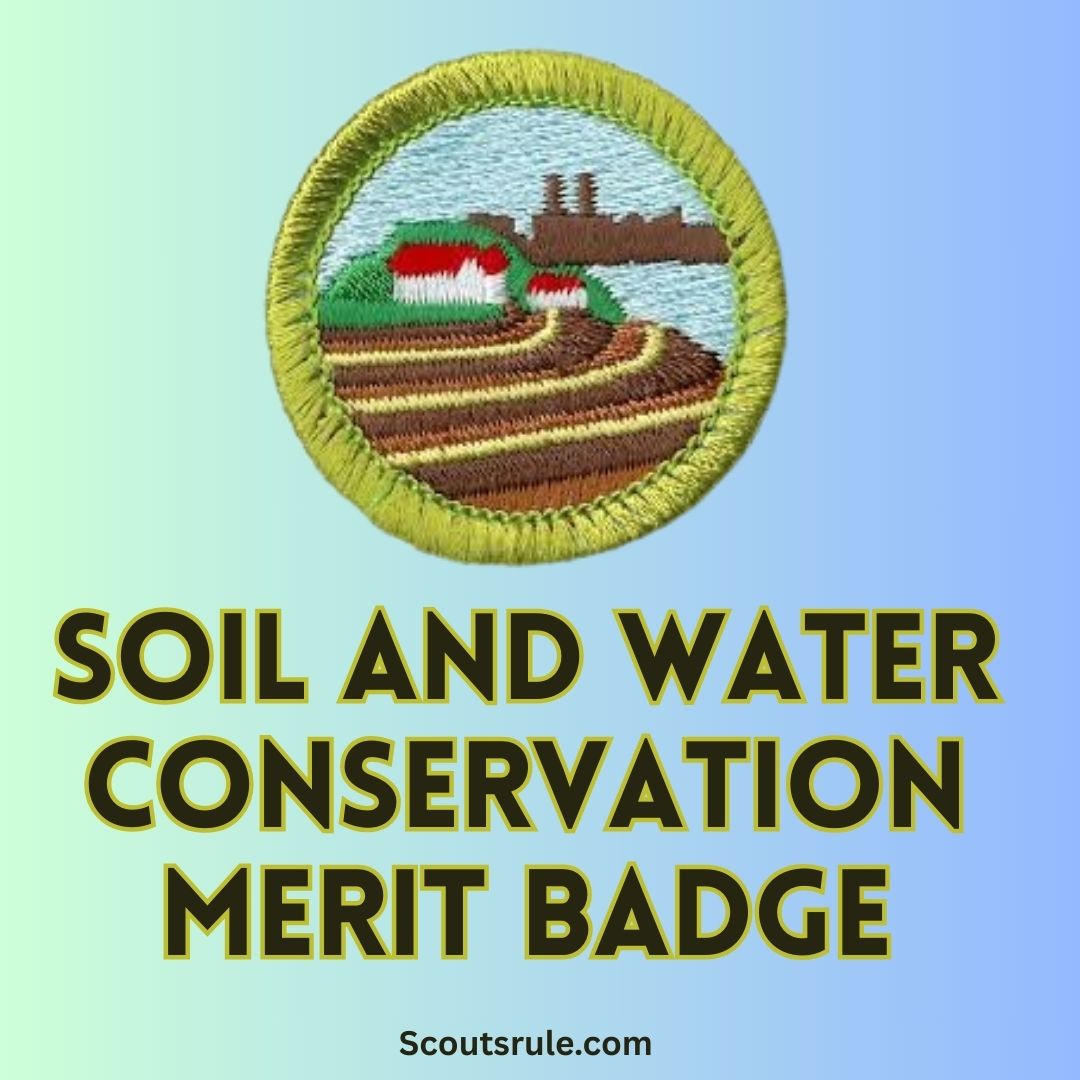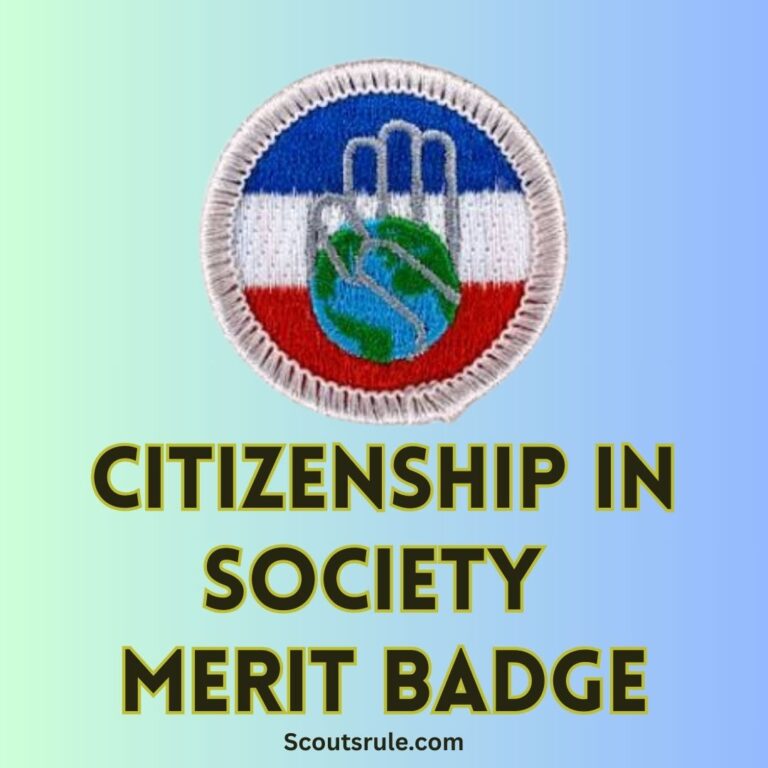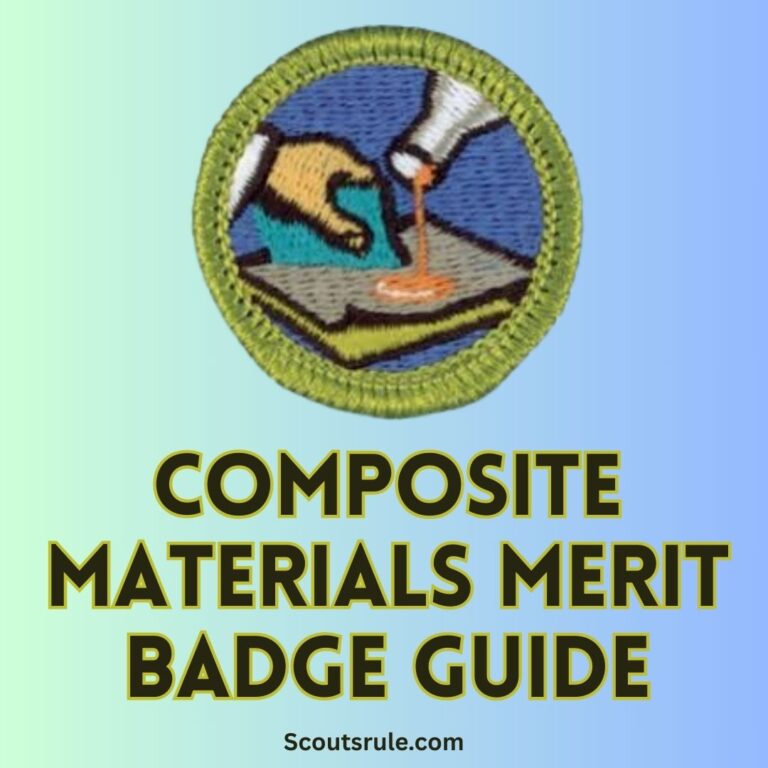
This guide is designed to help you explore the basic scientific principles behind soil and water conservation, understand the environmental challenges that affect our natural resources, and learn the various practices and strategies used to protect and enhance soil quality and water resources. Whether you are interested in the science behind soil formation, the causes and effects of erosion, or the practical applications of conservation practices on farms, campgrounds, and in urban settings, this guide will take you step by step through the requirements. It offers practical project ideas, tips for research and documentation, and strategies for self-reflection—all while emphasizing hands‑on learning and responsible stewardship of our natural resources.
Post Contents
- Introduction: The Importance of Soil and Water Conservation
- 2. Purpose and Objectives of the Merit Badge
- 3. Understanding Soil: Its Formation and Types
- 4. Plant Nutrients and Fertility
- 5. Understanding Soil Erosion
- 6. Conservation Practices: Protecting Soil and Water
- 7. Field Work and Documentation
- 8. Conclusion: Stewardship for a Sustainable Future
- 9. Additional Tips and Resources
- Conclusion: Stewardship for a Sustainable Future
Introduction: The Importance of Soil and Water Conservation
Soil and water are among our most valuable natural resources, critical not only to agriculture and food production but also to the overall health of the environment. Soil is the living, dynamic surface layer of the earth, supporting plant growth, filtering water, and storing carbon, while water is essential for all life forms. However, modern challenges—ranging from over-cultivation and deforestation to urban sprawl and climate change—have put these resources at risk. Erosion, nutrient depletion, and water contamination threaten sustainability and agriculture worldwide.
The Soil and Water Conservation Merit Badge invites you to explore the science behind soil formation and water systems, understand the effects of environmental degradation, and learn about conservation practices that can preserve these resources for future generations. By learning about the factors that contribute to soil fertility and the ways in which soil and water can be conserved, you gain an understanding of how science, agriculture, and environmental policy work together to maintain a balanced and healthy ecosystem.
2. Purpose and Objectives of the Merit Badge
The Soil and Water Conservation Merit Badge is designed to:
- Educate: Provide a solid foundation in the basic science of soils and water resources, including soil types, formation processes, nutrients, and the hydrologic cycle.
- Raise Awareness: Highlight the challenges that affect soil and water quality, such as erosion, nutrient depletion, and pollution.
- Develop Skills: Teach you techniques for preventing and mitigating erosion and for implementing conservation practices that sustain soil fertility and water quality.
- Promote Stewardship: Encourage you to become active in resource conservation and to advocate sustainable practices in your community.
- Foster Research: Strengthen your research, documentation, and presentation skills by exploring scientific literature, conducting field experiences, and recording your findings.
- Connect Theory and Practice: Engage in hands‑on projects that bridge the gap between classroom learning and real-world conservation efforts.
By fulfilling these objectives, you will not only learn about soil and water conservation but also develop a sense of responsibility and stewardship toward environmental resources.
3. Understanding Soil: Its Formation and Types
3.1 What Is Soil?
Soil is much more than just dirt. It is a complex mixture of minerals, organic matter, gases, liquids, and countless organisms that support life. Soil is the foundation for plant growth and a vital component of ecosystems. It filters water, stores carbon, and provides essential nutrients needed for agriculture. Understanding soil means delving into its physical composition and how it interacts with the environment.
3.2 How Soil Is Formed
Soil forms through a long-term process called weathering, where rock is broken down by physical, chemical, and biological factors. Key elements in soil formation include:
- Parent Material: The bedrock or loose sediments from which the soil is derived.
- Climate: Temperature and precipitation influence the rate of weathering and organic matter decomposition.
- Biological Activity: The decomposition of plant and animal matter enriches the soil with organic material.
- Topography: The landscape’s slope and position affect the drainage and accumulation of soils.
- Time: Soil gradually evolves over hundreds, even thousands, of years.
3.3 Describing Three Kinds of Soil
There are many types of soil, but for the merit badge you must describe at least three:
- Sandy Soil: Sandy soils consist mostly of large particles and have a gritty texture. They drain quickly but often struggle to retain nutrients and water.
- Clay Soil: Clay soils are composed of very fine particles that compact tightly. They hold water and nutrients well, but poor drainage can lead to issues such as waterlogging.
- Loam: Loam is considered ideal for plant growth because it is a balanced mixture of sand, silt, and clay. It drains moderately, retains sufficient moisture, and is rich in organic matter.
For each type, explain how the texture affects water retention, nutrient availability, and suitability for agriculture. You might create a comparative chart or take photographs of soil samples if available.
4. Plant Nutrients and Fertility
Soil fertility depends on the nutrients available to plants. Good soil should support a healthy, bountiful plant life.
4.1 The Three Main Plant Nutrients in Fertile Soil
- Nitrogen (N): Nitrogen is essential for plant growth as it is a major component of chlorophyll and amino acids. It fuels vibrant leaves and overall plant development.
- Phosphorus (P): Phosphorus is important for energy transfer within plants, stimulating root development and flowering.
- Potassium (K): Potassium helps regulate plant metabolism and increase resistance to disease, drought, and stress.
4.2 Refilling Essential Nutrients
Over time, as plants grow, they extract nutrients from the soil. Without replenishment, soil fertility slowly declines. Nutrients can be restored through:
- Organic Matter: Adding compost or green manure enriches the soil with decomposed organic material, replenishing nitrogen, phosphorus, and potassium.
- Inorganic Fertilizers: These provide concentrated nutrients and are especially useful in areas where natural fertility is low. However, care must be taken to avoid over-application, which can harm the environment.
- Crop Rotation and Cover Crops: Changing the type of crop grown in a particular area and using cover crops can help balance nutrient levels and prevent soil depletion.
Make sure to reflect on why maintaining soil fertility is crucial to sustainable agriculture and environmental health.
5. Understanding Soil Erosion
Soil erosion is a process in which the top layer of soil is removed by natural forces such as wind or water. This degradation of soil quality can have severe impacts on agriculture and the environment.
5.1 Defining Soil Erosion
Soil erosion is the gradual wearing away of the earth’s surface by natural elements. It occurs when the topsoil — the most fertile layer — is carried away by water runoff, wind, or other forces.
5.2 Why Soil Erosion Is a Critical Issue
Soil erosion reduces the amount of available land suitable for agriculture, leading to lower crop yields and reduced water quality. It can cause sedimentation in rivers and streams, which affects aquatic life and increases the risk of flooding. In a broader sense, erosion contributes to the loss of valuable organic matter and nutrients, weakening the sustainability of ecosystems and communities.
5.3 Three Types of Soil Erosion
- Water Erosion: Occurs when rainfall or surface water carries soil away. It includes sheet erosion (a thin layer of soil being removed uniformly) and rill erosion (small channels being cut into the soil).
- Wind Erosion: Wind can pick up loose, dry soil particles and transfer them over a distance. This type of erosion is especially common in arid and semi-arid regions.
- Tillage Erosion: Occurs as a result of agricultural practices—especially when soils are plowed or tilled excessively without proper conservation practices, leading to the displacement of topsoil.
5.4 Documenting Soil Erosion
For your documentation:
- Take photographs or create diagrams illustrating at least two types of soil erosion in your area.
- Observe sites such as riverbanks, agricultural fields, or rural roadsides.
- Include a brief description of what you observed, noting any patterns or specific environmental conditions triggering the erosion.
6. Conservation Practices: Protecting Soil and Water
Conservation practices are strategies to mitigate soil erosion and protect water quality. They ensure that the natural resources essential for agriculture and healthy ecosystems are maintained over time.
6.1 Defining Conservation Practices
Conservation practices include any methods used to prevent the loss of soil and to maintain the quality of water in a given area. These practices aim to reduce erosion, improve water retention, and enhance the fertility and structure of the soil.
6.2 Erosion-Control Practices
Common erosion-control practices include:
- Cover Crops: Planting crops such as clover or rye helps hold the soil in place, reducing the impact of rain.
- Contour Farming: Tilling and planting along the contours of a hill reduces water runoff and soil loss.
- Terracing: Building terraces on sloped land can slow water flow, allowing more infiltration and less erosion.
- Mulching: Spreading organic or inorganic material over the soil protects the surface from wind and water erosion, and retains moisture.
- Windbreaks: Planting trees or shrubs around fields can reduce wind speed over the soil, limiting wind erosion.
6.3 Additional Water Conservation Strategies
Protecting water quality and quantity is also essential:
- Retention Ponds and Swales: Construct these to collect rainwater and reduce runoff, allowing water to infiltrate slowly into the ground.
- Sediment Control: Use silt fences or sediment basins on construction sites to intercept eroded soil and prevent it from contaminating waterways.
- Riparian Buffers: Planting vegetation along water bodies prevents erosion of banks, filters runoff, and provides habitat for wildlife.
For your merit badge, document at least three erosion-control practices. Take photos, draw diagrams, or even observe such methods in action during field visits. Explain how each practice helps maintain soil integrity and water quality.
7. Field Work and Documentation
Practical experience is a crucial component of the Soil and Water Conservation Merit Badge. Engaging directly with the environment allows you to connect theory with reality.
7.1 Planning Field Projects
- Field Visits: Arrange visits to local farms, conservation areas, or parks where you can observe conservation practices firsthand. Ask questions about how land managers prevent erosion and protect water sources.
- Hands-On Experiments: Consider small experiments, such as creating a simple model of a terraced field or setting up a miniature erosion test using different types of ground cover (sand, soil, mulch). Record your findings.
7.2 Keeping a Detailed Documentation Portfolio
- Research Notebook: Document your visit dates, observations, interviews, and personal reflections. Include diagrams and sketches where possible.
- Photographs and Videos: Where permitted, take images or videos that capture the state of soil in untouched versus eroded areas, and record any conservation practices in use.
- Data Charts: Create charts or tables to compare the effects of various conservation practices or the types of erosion observed under different conditions.
- Final Report: Combine all your documentation into a cohesive portfolio. Your report should clearly address each of the merit badge’s requirements with evidence of research, observations, and reflections.
8. Conclusion: Stewardship for a Sustainable Future
Earning the Soil and Water Conservation Merit Badge is a transformational journey in understanding how natural resources are both formed and protected. By learning what soil is, how it’s formed, and the different types of soils, you build a foundation for appreciating the delicate balance necessary for plant and ecological growth. Studying plant nutrients and soil fertility reveals how essential natural processes contribute to agriculture, while a detailed examination of soil erosion—from its causes and types to its detrimental effects—underscores why proactive conservation is critical.
The conservation practices you learn, such as cover cropping, contour farming, terracing, mulching, and water retention strategies, are not only practical solutions to erosion but also represent broader ethical and environmental commitments. They remind us that preserving our natural resources is a shared responsibility—one that requires expertise, dedication, and a long-term vision.
Field experiences and documentation are key elements that provide a bridge between theoretical learning and real-world application. Observing conservation practices in action, recording your insights, and reflecting on how these methods secure our natural environment will equip you to make informed decisions and foster a mindset of environmental stewardship.
As you compile your work for the Soil and Water Conservation Merit Badge, you are not only fulfilling a necessary Scouting requirement—you are also cultivating a perspective that values sustainability, responsible resource management, and community involvement. The skills you develop and the insights you gain have far-reaching benefits, not just for your own understanding but for the future of our nation’s vital natural resources.
May your journey through the Soil and Water Conservation Merit Badge instill in you a lifelong commitment to protecting the earth, sustaining fertile lands, and ensuring that our water remains pure for generations to come. Embrace every field visit, every experiment, and every reflection as an opportunity to contribute to a more sustainable, resilient future.
Happy conserving, and may your newfound knowledge empower you to make a positive impact on the world around you!
9. Additional Tips and Resources
Additional Tips
- Be Proactive: Seek opportunities to volunteer with local conservation projects or community gardens. Real-world experiences enhance your learning and provide hands-on practice.
- Stay Organized: Keep all your notes, photographs, and research materials in a well-organized binder or digital folder. Label each section clearly as you work through different requirements.
- Consult Experts: Engage with local agricultural extension offices, conservation organizations, or university departments. Their expertise can offer valuable insights into current practices and advanced techniques.
- Reflect Regularly: Write weekly reflections—not only about what you learned but also about how these lessons apply to your overall vision for environmental sustainability.
Resources
- Merit Badge Pamphlet: Always refer to the official Soil and Water Conservation Merit Badge pamphlet for the current requirements.
- US Scouting Service Project and Related Websites: Websites like Scoutles.com and ScouterMom.com offer sample worksheets, guides, and organizational tips specific to this merit badge.
- Government and Educational Sites: Use resources from the U.S. Department of Agriculture (USDA), the Environmental Protection Agency (EPA), and local university agricultural or environmental science departments.
- Local Field Visits: Check with local environmental agencies or conservation groups for opportunities to visit sites that showcase effective conservation practices.
Conclusion: Stewardship for a Sustainable Future
The Soil and Water Conservation Merit Badge invites you to explore one of the most critical areas of environmental stewardship. By understanding how soil is formed, learning about its types and essential nutrients, and delving into the mechanisms of soil erosion, you gain a deeper appreciation of the delicate balance that sustains plant life and, by extension, human life.
This merit badge is more than an academic exercise—it is an active journey toward becoming an informed, responsible steward of natural resources. The conservation practices you study and document, from agricultural techniques like contour farming and terracing to modern water retention strategies, illustrate how human initiative can be harmonized with nature to create a sustainable future. Field work and detailed documentation are essential components that transition classroom learning into actionable knowledge, empowering you to apply these practices in your community.
As you compile your portfolio, remember that your efforts contribute not only to your personal growth but also to a broader commitment to environmental conservation. Your diligent work helps underline the importance of protecting our soil and water—the foundations of ecological health and agricultural productivity—for future generations.
May your journey through the Soil and Water Conservation Merit Badge inspire you to advocate for sustainable practices, deepen your connection to the natural world, and foster a mindset of proactive care for our environment. The skills you build and the experiences you gain will undoubtedly serve you well in all your future endeavors, whether in agriculture, environmental science, or simply as a conscientious citizen in a rapidly changing world.

Hi, Robin here, A former lead Scout and here I share my inspiring stories about USA Scouts, leadership, adventure, how to guides and more.






